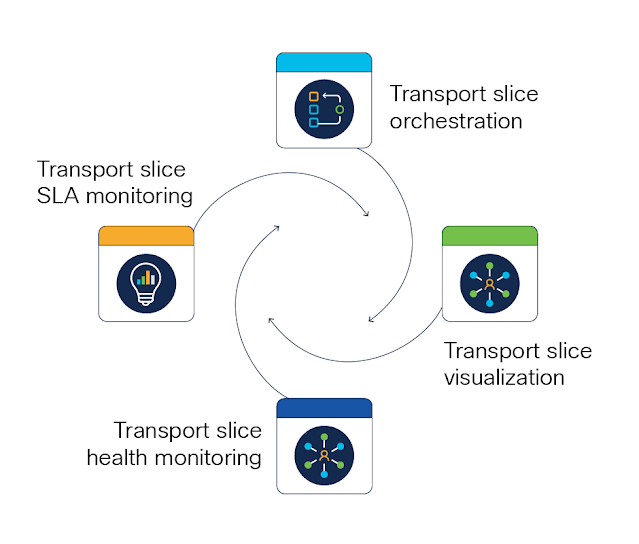IT related outages and performance issues can inflict significant financial and operational harm on businesses, especially in critical sectors such as finance, healthcare, and e-commerce. These IT disruptions not only impact productivity potentially costing enterprises billions annually, but also negatively affect end-users through poor experiences like delays and inaccessibility. The vitality of business applications is crucial, as their availability and performance directly influence stakeholder impact, operational continuity, and profitability. Resolving these issues is often complex and labor-intensive. Any system-related downtime or lapse in application performance can ultimately lead to long-term setbacks for an organization.
Typical Troubleshooting Scenario of IT Infrastructure Without ThousandEyes
As soon as an end-user reports an IT related issue, whether it’s a service outage or slow application performance, the formidable challenge of locating and fixing the issue begins. It’s often like searching for a “needle in a haystack.” The troubleshooting journey to uncover the underlying cause of the IT infrastructure related issues typically involves and unfolds with the following challenges:
- Prolonged Troubleshooting and Finger Pointing – Organizations frequently encounter difficulties in addressing IT outages and performance problems due to limited network visibility and siloed IT teams. This situation fosters a blame culture and hinders collaboration, as teams focus more on debating the cause of issues rather than fixing them, leading to inefficient use of time and resources in Incident Response efforts.
- Limited End-to-End Visibility – Infrastructure and operations professionals struggle to gain a complete and clear understanding of the end-user experience due to the “black box” nature of the Internet and inadequate traditional monitoring tools. These tools often fail to provide detailed performance data across devices, applications, and the Internet, complicating IT teams’ efforts to pinpoint root causes of issues.
- Inefficient Resource Allocation – Addressing outages and performance issues consumes significant time and diverts IT resources from strategic initiatives. In-house monitoring systems frequently produce false alerts, misallocating resources and impeding the IT’s capacity to effectively maintain and optimize infrastructure performance.
ThousandEyes tackles these prevalent challenges by presenting an integrated solution with end-to-end visibility into both network infrastructure and application performance. This exceptional level of insight and actionable intelligence enables IT teams to work together with greater synergy, ability to pinpoint and rectify issues, and optimize the deployment of their IT operations resources. The unparalleled abilities of ThousandEyes sets it apart from other platforms by greatly enhancing the visibility and understanding of the components within an environment.
Enhancing Managed Network Services for Client Success
ThousandEyes, a Digital Experience Assurance (DXA) platform, equips organizations with comprehensive insights into user experiences and application performance across the Internet, cloud services, and internal IT infrastructure, thereby streamlining the optimization of essential network-dependent services and applications. This platform can significantly expedite problem resolution and reduce the resources required to address common infrastructure problems by offering the following benefits:
- Visibility – ThousandEyes provides MSPs with a holistic view that encompasses their clients’ internal networks as well as external networks, cloud services, and SaaS platforms. This end-to-end visibility allows MSPs to oversee and address issues throughout the entire digital supply chain, from core infrastructure to the application level. With this extensive coverage, MSPs are equipped to quickly locate the source of any issue across the network spectrum, thereby shortening the time required to identify problems.
- Troubleshooting – ThousandEyes streamlines the troubleshooting process by swiftly pinpointing the root causes of infrastructure related issues, whether they occur within the enterprise network or are due to external factors like ISPs, cloud providers, or SaaS applications. The platform fosters collaboration among IT teams by providing a unified data set, which helps eliminate finger-pointing and accelerates problem-solving, thereby significantly reducing the time required to resolve issues.
- Digital Experience Assurance – ThousandEyes conducts comprehensive performance monitoring by tracking key network metrics like latency, packet loss, and jitter, along with application-level metrics that shed light on the user experience and the performance of web and API transactions. Additionally, the platform enhances DXA by simulating user transactions and scrutinizing the data pathways to end-users, ensuring that both customers and/or employees have effective access to business applications.
- Alerting and Reporting – ThousandEyes enhances proactive IT management by providing intelligent alerting and comprehensive reporting. Users are notified of performance degradation in real-time and can access historical data and trend analysis for informed decision-making. This proactive alerting capability allows IT teams to identify and address anomalies early, potentially reducing the frequency and severity of incidents therefore minimizing their impact.
- Optimization – Organizations can optimize network performance and enhance user experience by leveraging insights from both historical and real-time data on application and service delivery paths. This comprehensive understanding enables informed decision-making that not only addresses current performance issues but also helps prevent future ones, ultimately conserving time and resources.
ThousandEyes enhances organizational capability to deliver high-quality digital services through valuable insights and analytics, which strengthen network management capabilities and facilitate more effective decision-making and issue resolution. Although the extent of benefits or efficiency gains varies across different organizations, users commonly report marked improvements after implementing ThousandEyes, with some noting up to a 75% faster resolution of network problems and fewer outages and performance issues. Customers have reported substantial reductions in troubleshooting times, with tasks that previously took hours or days being cut down to mere minutes, thanks to ThousandEyes.
ThousandEyes Enhances the Service Offerings of MSPs, Greatly Improving the Overall Experience
Managed Service Providers can enhance their client’s network management and optimization by leveraging the following benefits of Cisco ThousandEyes:
- Improved Service Level Agreements (SLAs): With detailed insights into network performance and the ability to quickly identify and resolve issues, MSPs can better adhere to, or further enhance their SLAs. This helps in maintaining a high level of service and can distinguish the MSP’s offerings in a competitive market.
- Proactive Problem Resolution: ThousandEyes’ alerting system can notify MSPs of potential issues before they affect end-users. This proactive approach minimizes downtime and can help MSPs address problems before clients are even aware of them.
- Enhanced Customer Experience: By ensuring that applications and services are running smoothly, MSPs can contribute to a better end-user experience for their clients’ customers. This is particularly important for customer-facing applications where performance directly impacts revenue and brand reputation.
- Efficient Troubleshooting: With the comprehensive network telemetry from ThousandEyes, MSPs can swiftly identify the root cause, whether they stem from the client’s internal network, an ISP, or various cloud-based services. This capability decreases the average time required to resolve issues.
- Data-Driven Decisions: The data collected by ThousandEyes can inform strategic decisions about network design, capacity planning, and performance optimization. MSPs can use this information to advise clients on how to improve their IT infrastructures.
- Reporting and Communication: MSPs can use the detailed reports and visualizations provided by ThousandEyes to effectively communicate with clients about network health, ongoing issues, and resolved problems, enhancing transparency and trust.
ThousandEyes: Your Shortcut to Advanced Network Visibility
ThousandEyes simplifies deployment with its cloud-based SaaS model. It integrates smoothly into diverse environments using versatile agents, including the specialized Enterprise Agents—robust, dedicated monitoring nodes that provide deeper network insights. These Enterprise Agents can be deployed on-premises in data centers, within private clouds, or even across public cloud platforms like AWS, Google Cloud, and Azure to monitor network and application performance. Additionally, ThousandEyes provides a browser extension designed for monitoring of user experience. Furthermore, its compatibility with Cisco and Meraki infrastructure streamlines integration, facilitating easy embedding into current deployments. The straightforward web management interface streamlines configuration, and the platform’s API accessibility supports automation, making ThousandEyes a highly adaptable and effortless choice for comprehensive network visibility.
MSPs Can Now Leverage Consumption-Based Licensing for ThousandEyes
In addition to traditional Enterprise Agreement licensing vehicles, ThousandEyes is now available through the Cisco Managed Services Licensing Agreement (MSLA), a program that was designed to meet the specific requirements of MSPs. This consumption-based licensing model is flexible and scalable, fitting the service-based business models of MSPs by allowing them to pay based on consumption. The MSLA program allows MSPs to adjust their ThousandEyes usage without complex contract changes, facilitating quick adaptation to evolving market demands.
MSPs and Their Clients Can Garner Significant Return on Investment
The integration of ThousandEyes by MSPs leads to a worthwhile ROI and an enhancement of their managed service offerings, providing benefits for both the providers and their clients. MSPs experience a marked improvement in their ability to offer advanced network visibility, comprehensive performance monitoring, and proactive issue resolution. These capabilities result in elevated service quality and increased customer satisfaction. End users reap the rewards of more reliable and efficient network services, experiencing fewer disruptions and thus less impact on their business operations. Moreover, the operational efficiencies introduced by ThousandEyes help reduce costs and free up valuable resources, enabling MSPs to focus more on business expansion and continued services improvement. In a time when digital transformation and dependency on Internet and cloud services are growing, having complete network visibility is essential. ThousandEyes is critical in this landscape, acting as a GPS for the digital world, offering insights and guidance for effective and efficient navigation.
Source: cisco.com
















